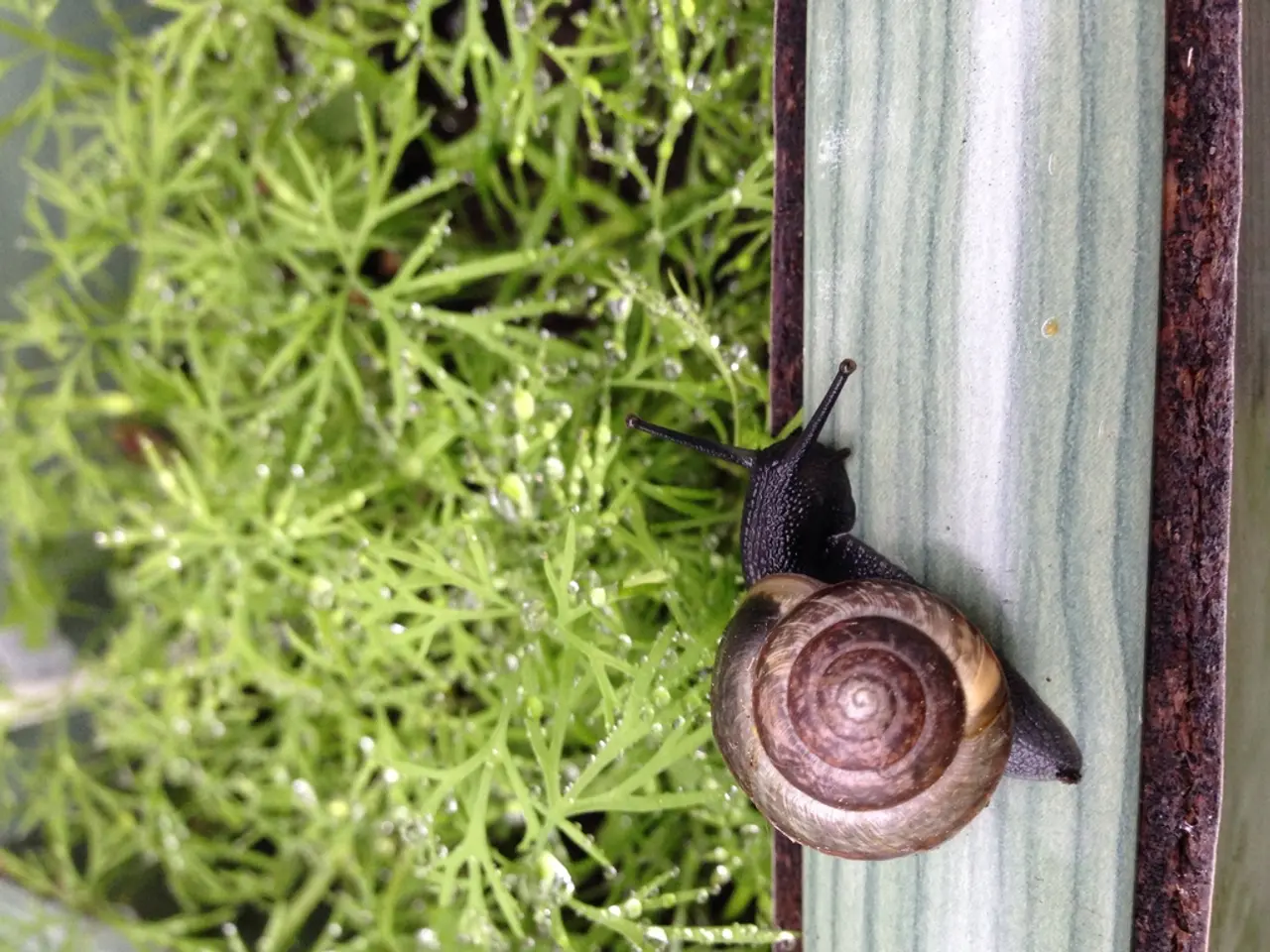Tips for Eliminating Snails and Preventing Their Return Organically, Preserving Plants, People, and Pets' Safety
Garden snails can cause significant damage to plants, leaving irregular holes or notches on leaves, flowers, and vegetable crops. To prevent and manage garden snail infestations, it's essential to understand their habits, identify damage, and apply effective control methods.
Firstly, identifying snail damage is crucial. Look out for silvery slime trails on plants or soil, which indicate snail activity, and observe for typical signs of damage such as oblong holes on leaves, mostly on one side if the plant has thick leaves. If you notice these symptoms, it might be time to take action.
Snails prefer damp, dark, and shaded areas with abundant vegetation. They often hide under logs, stones, mulch, or dense ground cover during the day and become active at night or in cool, moist conditions. Gardens with excessive moisture or shaded by dense plants create ideal snail habitats. To reduce their presence, remove or reduce hiding spots by clearing garden debris, improving drainage, and sealing garden cracks and gaps.
Effective control and prevention methods include cultural and physical controls, barriers and deterrents, trapping and removal, biological control, and chemical control (if necessary and safe).
Cultural and physical controls involve removing garden debris, stones, and dense ground cover to limit snail refuges, improving drainage, and reducing excess moisture to make the environment less hospitable.
Barriers and deterrents include copper tape, diatomaceous earth, crushed eggshells or sea shells, natural scents like garlic spray, coffee grounds, citrus peels, and mint. Placing copper tape around plant bases repels snails, while diatomaceous earth and crushed eggshells create abrasive barriers that discourage snail movement. Natural scents like garlic spray, coffee grounds, citrus peels, and mint can repel snails.
Trapping and removal methods include beer traps and handpicking. Placing shallow dishes of beer attracts snails, which drown in the liquid (requires replenishing after rain). Handpicking snails in the cool, damp evenings and relocating them far away or disposing of them by drowning in soapy water is a simple and effective way to control their population. This should be done weekly.
Biological control involves encouraging natural predators such as birds, frogs, hedgehogs, and certain insects to naturally reduce snail populations. Chemical control, if necessary and safe, includes using iron phosphate-based slug and snail baits, which are safer for pets and beneficial insects, and avoiding harsh chemical pellets that harm the ecosystem.
By combining these methods, you can effectively reduce and control garden snail populations without widespread chemical use. For long-term management, it's essential to monitor snail activity regularly, turn over mulch in spring to expose slugs and their eggs to predators, and maintain a well-drained, sunny garden environment.
Remember, snails can be beneficial in gardens as they consume decaying matter or prey on insects. However, when they become a nuisance, implementing these strategies can help you maintain a healthy and snail-free garden.
[1] Ellis, M. E. (2021). Snail and Slug Control in the Garden. The Spruce. Retrieved from https://www.thespruce.com/snail-and-slug-control-in-the-garden-1807796
[2] Snail and Slug Control. (2021). University of California Agriculture and Natural Resources. Retrieved from https://ucanr.edu/sites/SNAP/Snail_and_Slug_Control/
[3] Snail and Slug Control. (2021). Cornell University Cooperative Extension. Retrieved from https://blogs.cornell.edu/mastergardeners/snail-and-slug-control/
[4] Diatomaceous Earth for Garden Pests. (2021). Gardener's Path. Retrieved from https://www.gardenerspath.com/diatomaceous-earth-for-garden-pests/
[5] How to Get Rid of Garden Snails. (2021). The Gardening Channel. Retrieved from https://www.thegardeningchannel.com/how-to-get-rid-of-garden-snails/
Implementing a balanced approach to gardening can help maintain a lifestyle that includes a healthy and snail-free home-and-garden. By utilizing solutions like copper tape, diatomaceous earth, and natural scents as barriers and deterrents, individuals can create an environment that discourages garden snail activity. Meanwhile, regular monitoring, careful management of garden debris, and ensuring proper drainage all contribute to the overall home-and-gardening process, keeping both plants and ecosystems thriving, while minimizing snail infestations.




